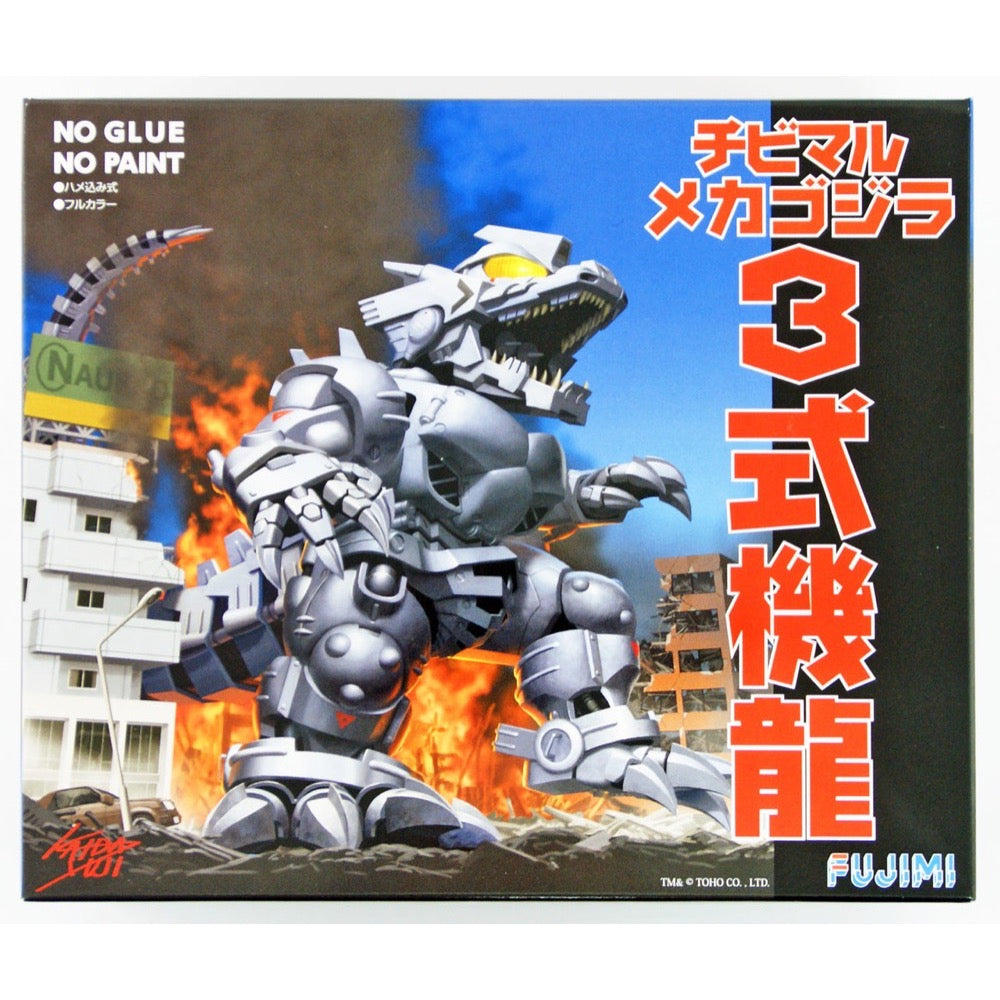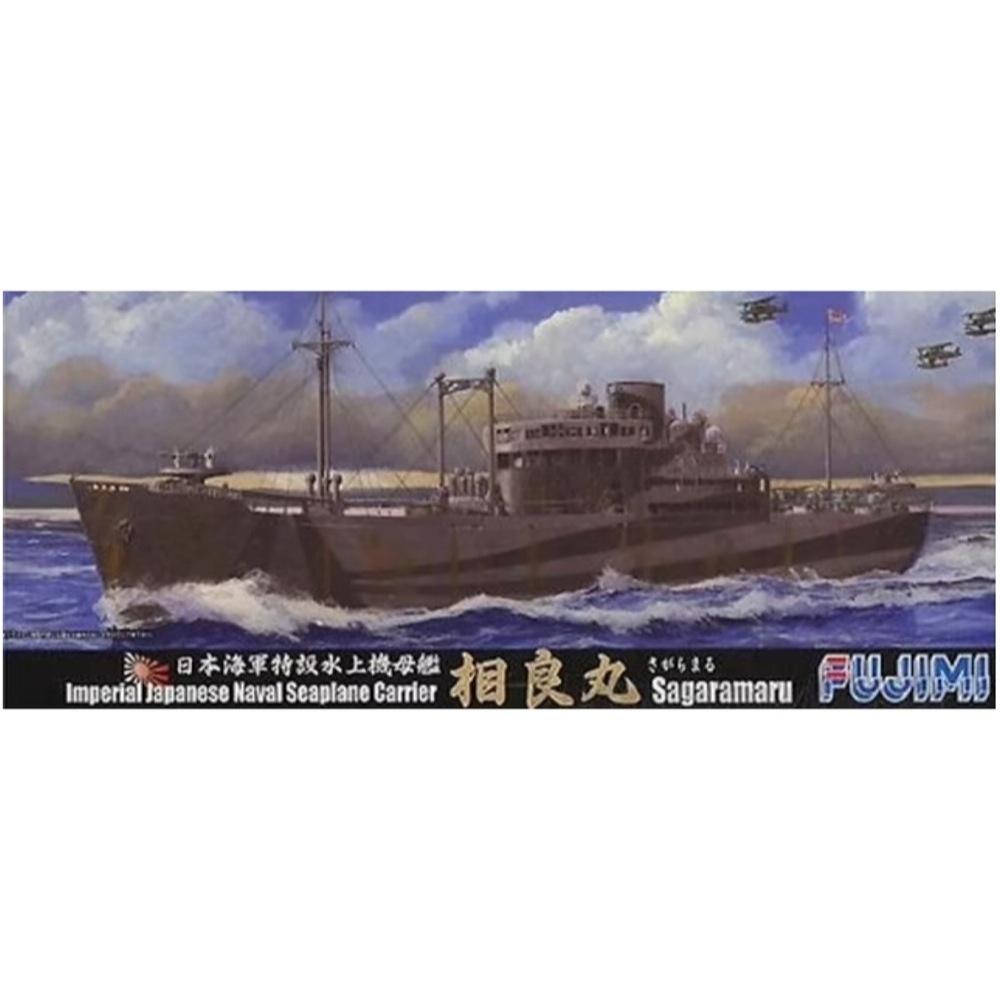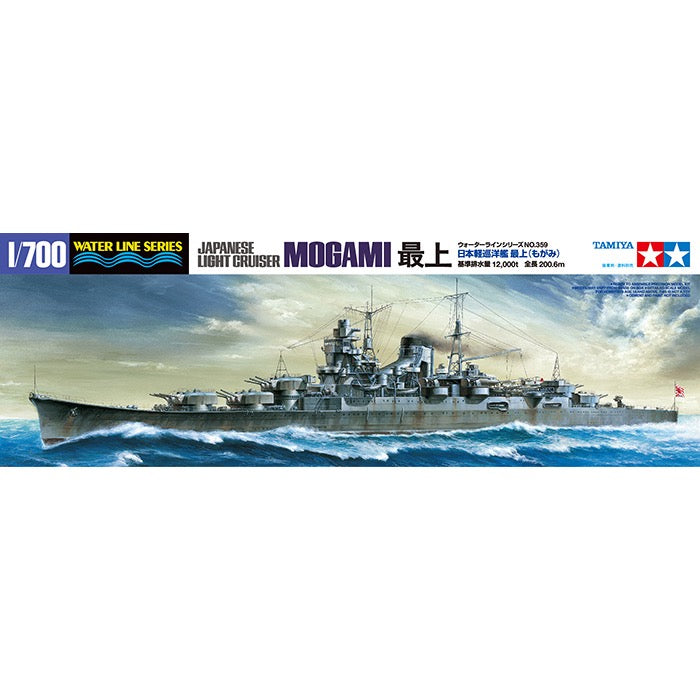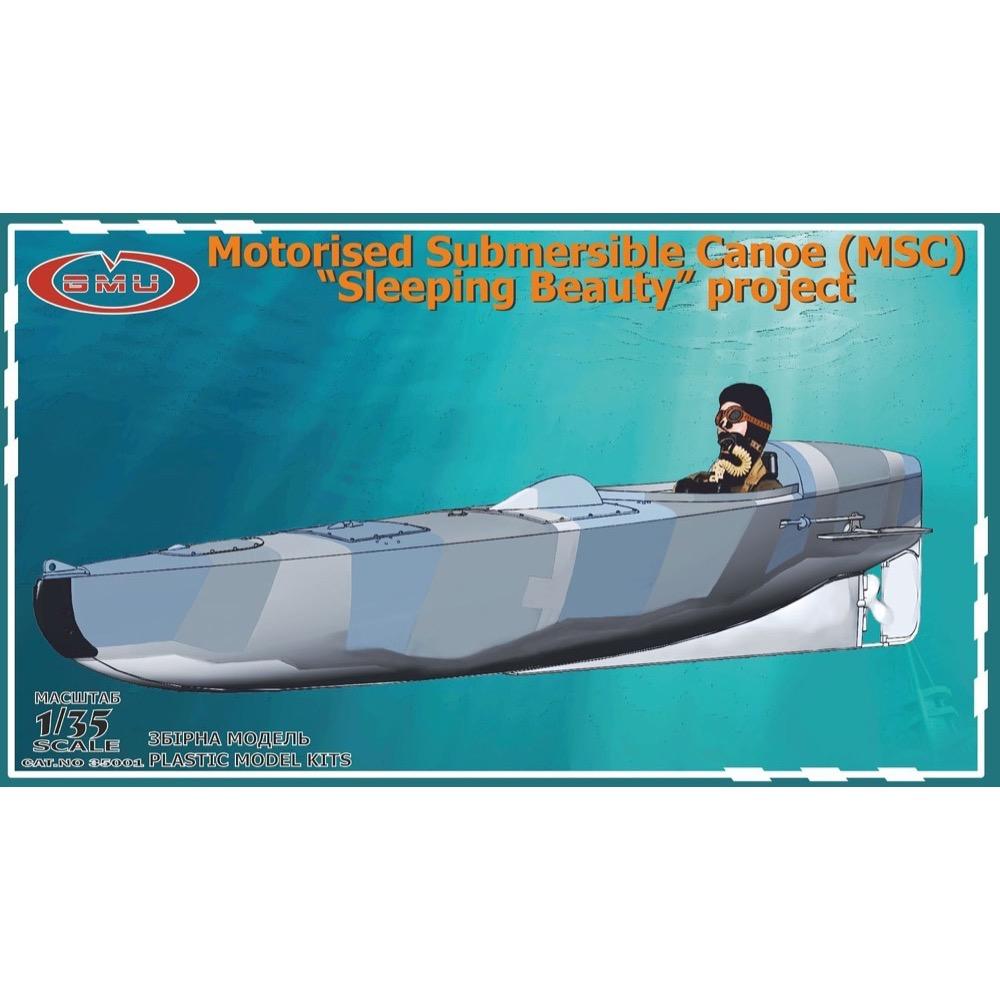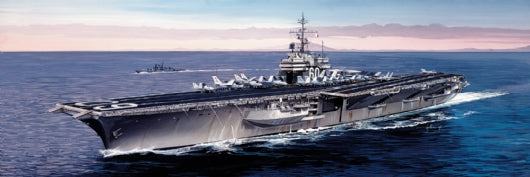
Takom SP7036 1/700 SMS Luetzow 1916 Full Hull
19.00
$
<p>SMS Lützow was the second Derfflinger-class battlecruiser built by the German Imperial Navy before World War I. Lützow was a sister ship to Derfflinger from which she differed slightly in that she was armed with an additional pair of 15 cm (5.9 inch) secondary guns and had an additional watertight compartment in her hull. She was lost during the Battle of Jutland in 1916.</p>
<h3>Features</h3>
<ul>
<li>Detailed static display plastic model</li>
<li>1 Type of marking</li>
<li>PE Parts included</li>
</ul>
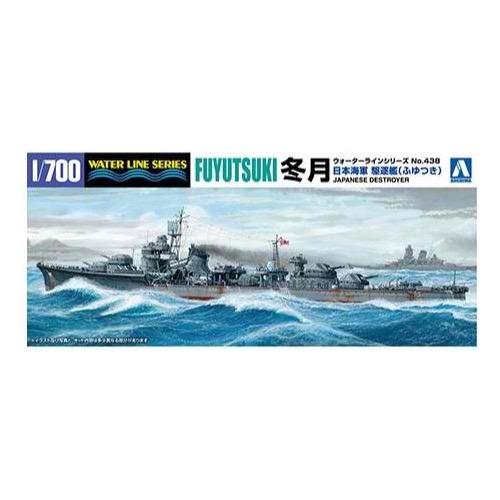
Aoshima A001757 1/700 IJN Destroyer Fuyutsuki
10.00
$
<p>Fuyutsuki was built as the sixth of the Akizuki -class destroyers, but was strictly a quasi-identical ship with simplified construction. After its completion, it was struck by lightning while sailing as a fleet escort and suffered a severed bow. After repairs, she participated in a suicide attack on the battleship Yamato and returned to Kure. Then she participated in air defense against air raids by U.S. ships, and after the war, she was engaged in minesweeping operations as a craft ship and was used as a breakwater.</p>
<p>This is a plastic model kit, which comes unassembled and unpainted. So glue, model paints and other basic modelling tools are additionally required.</p>
<h3>Specification</h3>
<ul>
<li>Scale: 1/700</li>
<li>Item Size/Weight: 22.2 x 9.6 x 2.7 cm / 90g</li>
</ul>
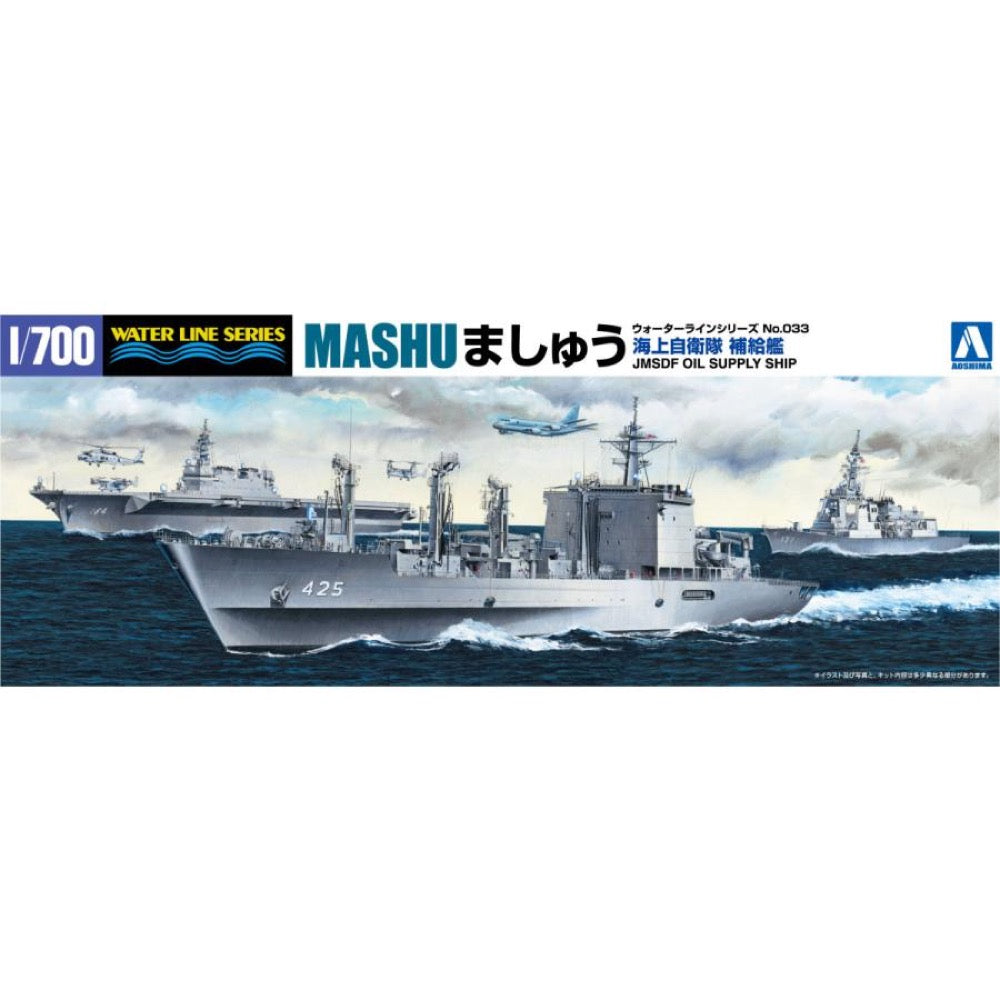
Aoshima A005187 1/700 JMSDF Oil Supply Ship Mashu
25.00
$
<p>The Mashu is a modern Japanese supply and support vessel for the Japanese Navy Self-Defense Forces. The launch took place in February 2003 and commissioned in March 2004. The total length of the ship is 221 meters, the overall width is 27 meters, and the full displacement is about 25,000 tons. The maximum speed does not exceed 25 knots. The drive is provided by two Rolls-Royce Kawasaki Spey SM1C gas turbines. The crew consists of 145 people. Mashu, along with her sister ship Omi, form a class of two supply units with the same name as the presented unit. Mashu-class ships are essentially a modernization of Towada-class ships. The main changes mainly concern the significant enlargement of the units and the increase in the carrying capacity of the materials they are taking for other ships in the combat group. Mashu-class ships also have not only an air deck, but also their own hangar that allows them to independently operate the helicopters.</p>
<p>With the world facing regional conflicts and international terrorism, the mission of the Japan Maritime Self Defence Force (J.M.S.D.F.) ranges from national defence, overseas missions, rescue activities and supplying U.S. and allied forces. At this time with increasing need of international peace keeping operations, replenishment of oilers along with escort vessels have become of great importance.</p>
<p>Until Helicopter destroyer Izumo was commissioned, Mashu was the largest vessel within the J.M.S.D.F. Commissioned in March 15th, 2004, she belongs to Replenishment at Sea Squadron 1 in Maizuru.</p>
<p>This is an injection-plastic ship model kit.</p>
<h3>Includes</h3>
<ul>
<li>Decal sheet</li>
<li>Ballast bar</li>
</ul>
<h3>Mold Color</h3>
<ul>
<li>Gray, black</li>
</ul>
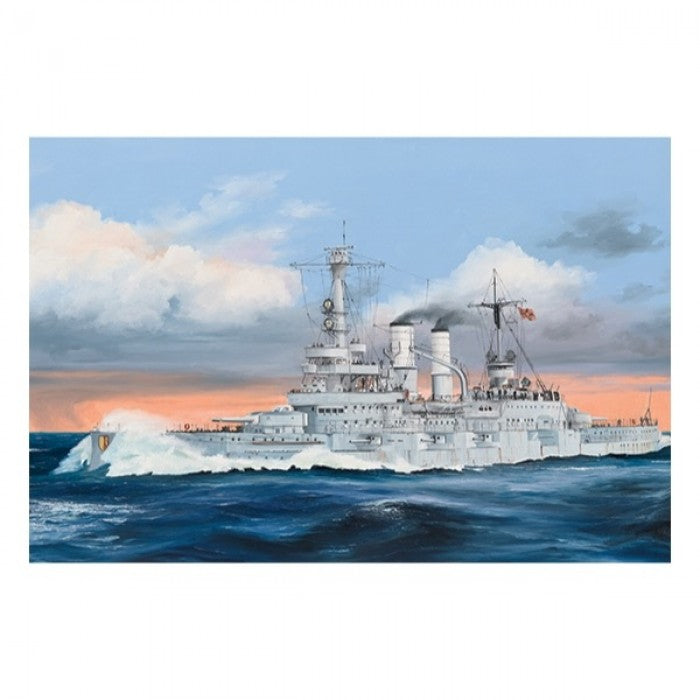
Trumpeter 05354 1/350 Schleswig Holstein Battleship 1935*
54.00
$
<p>The German battleship Schleswig-Holstein was a German-class former dreadnought ship, launched in 1906, with a base displacement of 13,993 tons. Full length: 127.7112 m.</p>
<p>After the defeat of Germany in World War I, the terms of the Treaty of Versailles clearly stated that the defeated Germany was not allowed to build and own a fearless battleship, only allowed to retain eight old battleships, except for training and coast. Outside the defense, no other use, these restrictions are that the German Navy can only be a regional maritime force with limited capabilities. Schleswig-Holstein is one of the old ships that allows Germany to retain. Before the launch of the new German ship, Shihe and other old ships have been silently shouldering the heavy responsibility of defending Germany's seas and seas.</p>
<p>On August 25, 1939, the old battleship of Shihe was a "friendly visit" to the free city of Danzig, Poland, in the name of "commemorating the death of soldiers in World War I." At 4:17 am on September 1, Shihe bombarded the Polish military camp. The first shot of World War II was launched, and a cannon was opened to open the curtain of World War II.</p>
<p>In the Second World War, the German Navy surface warships basically contracted into the port, and the old Shihe also painted land camouflage to hide in Tibet. In the end, it was impossible to escape the fate of being bombed. After the war, he was salvaged as compensation for the Soviet Union.</p>
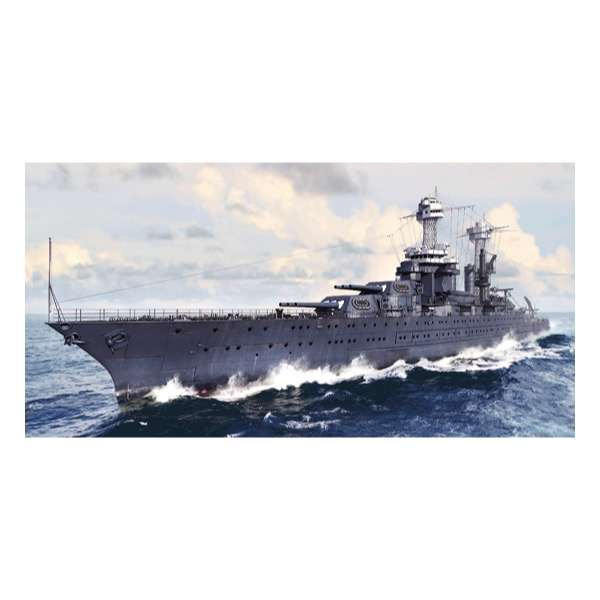
Trumpeter 05781 1/700 USS Tennessee BB-43 1941
27.00
$
<p>The USS Tennessee (BB-43) was the third ship of the United States Navy named in honor of the 16th US state. During World War II she was damaged during the attack on Pearl Harbor, and was repaired and modernized. She participated in battles for the Aleutian Islands, Tarawa, the Marshall Islands, the Marianas, the Philippines, Iwo Jima and Okinawa. She was also involved in the Battle of Surigao Strait, the final battleship vs. battleship conflict ever.</p><p></p>
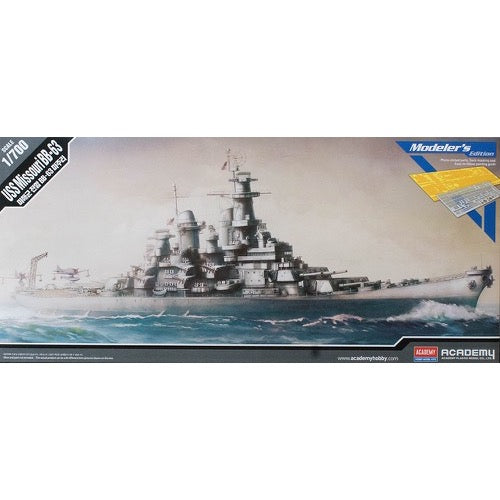
Academy 14223 1/700 USS Missouri BB-63 Modeler's Edition
31.00
$
<p>USS Missouri (BB-63) was an American battleship laid down in 1941, launched in January 1944, and commissioned in the US Navy in June 1944. The length of the ship was 270.4 m, width 33 m, and her full displacement - at the time of launching - 58,400 tons. The top speed of the USS Missouri battleship was up to 33 knots. The main armament at the time of the launch was 9 406 mm guns in three turrets of three guns each, and the secondary armament was mainly 20 127 mm guns.</p>
<p>The USS Missouri was the third of the six Iowa-class battleships ordered. As it turned out, with the Montana-class battleship building program failing, the Iowa-class battleships were the last to be launched for the US Navy. As they were built without any financial or displacement limits, they also turned out to be the most technologically advanced American battleships in World War II. From the outset, they were built as key carrier ships for aircraft carriers and placed great emphasis on high top speed, which made Iowa-class battleships much faster than any other American battleships. They also had carefully crafted armor and new 406 mm Mk. VII with a greater range of the effective shot. USS Missouri (BB-63) began its participation in World War II in December 1944, by ferrying from Atlantic ports to Hawaii. As early as January 1945, he supported the US Marines on Iwo-Jima with his artillery. In March this year, the USS Missouri acted as a shield ship for a team of aircraft carriers that attacked targets on the Japanese Islands with their on-board planes. In April, he supported activities in the Okinawa region. The battleship completed its operations in World War II in a very glorious and representative manner - it was on board that the representatives of Japan signed the act of unconditional surrender of their country on September 2, 1945. The ship also took an active part in the Korean War (1950-1953). In 1956, however, he was placed in the reserve. In the 1980s, he returned to line service, having previously undergone a thorough modernization. It involved the installation of modern electronics and fire control systems, as well as the installation of Tomahawk and Harpoon rocket launchers and Phalanx anti-aircraft systems. The battleship was also adapted to the homing of on-board helicopters. The ship modernized in this way took an active part in the protection of tankers in the Persian Gulf region in 1987, in the final phase of the Iran-Iraq war. He returned to these waters in 1990 to take an active part in Operation Desert Storm (1990-1991) firing rockets and on-board artillery at targets in Iraq. Finally, in 1992, the ship was decommissioned. At present, it serves as a museum ship in Hawaii.</p>
<h3>Features</h3>
<ul>
<li>Snap-together assembly (I used glue in my quick build)</li>
<li>Optional waterline display</li>
<li>Optional display stand for full-hull display</li>
<li>Lots of anti-aircraft batteries provided</li>
<li>Nicely detailed superstructure</li>
<li>Two SC-1 Seahawks and two catapults provided</li>
<li>Large sheet of yellow-tape masks for the decks, AAA gun wells, and upper surfaces of the main and 5 inch gun turrets</li>
<li>Set of photo-etched parts which provide railings, radar antennas, and other details</li>
</ul>
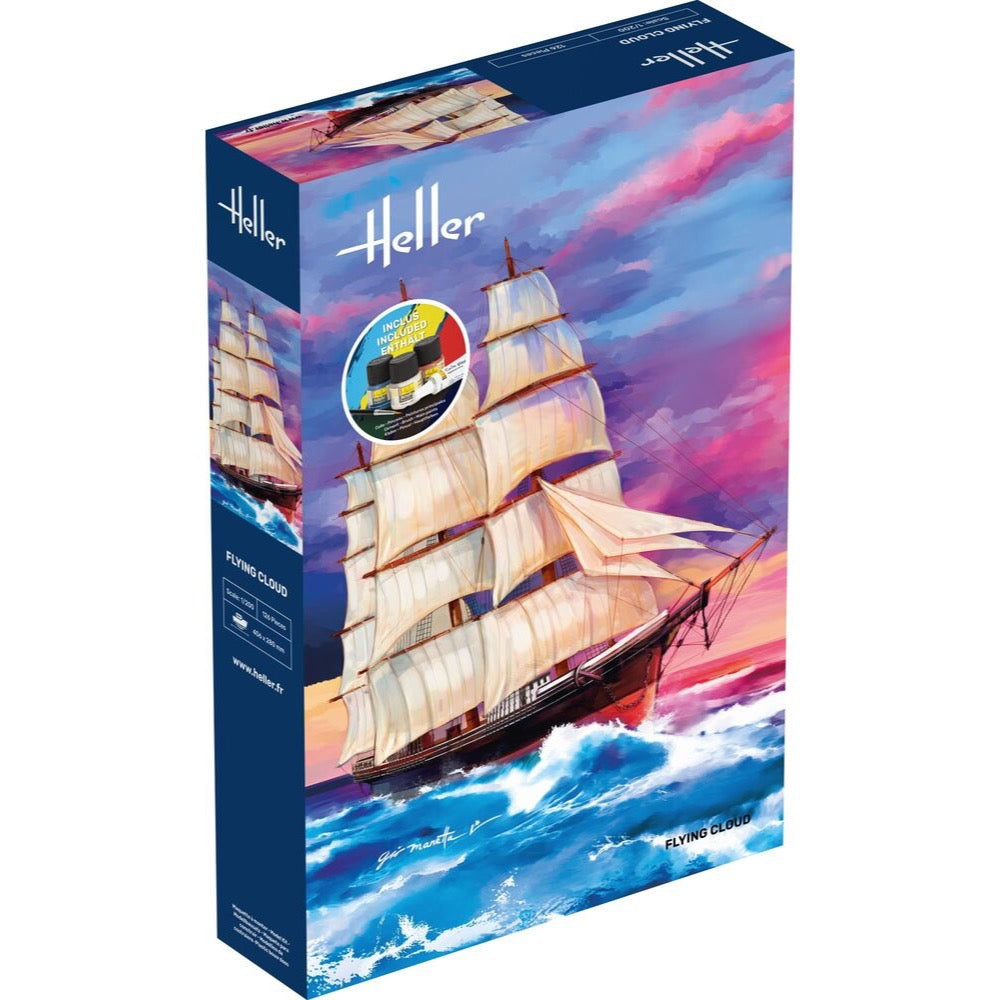
Heller HLL56830 1/200 Flying Cloud Starter Kit
37.00
$
<p>Flying Cloud was a clipper ship that set the world's sailing record for the fastest passage between New York and San Francisco, 89 days 8 hours. The ship held this record for over 130 years, from 1854 to 1989. Flying Cloud was the most famous of the clippers built by Donald McKay.</p>
<h3>Specification</h3>
<ul>
<li>Scale: 1:200</li>
<li>Parts: 126 pieces</li>
<li>Packaging: 250 x 375 x 70 mm</li>
</ul>
<h3>Includes</h3>
<ul>
<li>Cement</li>
<li>Brush</li>
<li>Main paints</li>
</ul>


